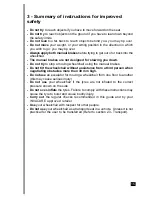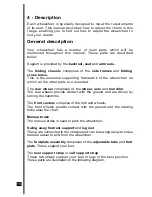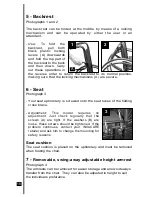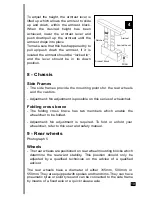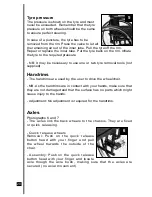
27
21 - Routine checks and maintenance
Checking performance
As a user, you are the first to notice that your wheelchair is not operating
properly. The following table shows some readily identified symptoms and
gives the preliminary checks to be carried out. As a general rule, the parts
subject to wear should be monitored and changed most often: tyres on the
rear wheels, front castor wheels, brake pads, upholstery.
The wheelchair
The wheelchair The wheelchair
The
Creaks
Play
Checks
drags
drags
turns or
castors
and
in the
to the right
to the left
moves slowly
wobble
clicking
chair
X
X
X
Check that the
tyre pressure
is correct and even
X
X
X
X
Check that nuts, bolts
and screws are tight
X
X
X
Check that the angle
of the front forks is correct
X
X
X
Check that the castors
are both in contact with
ground at the same time
If the symptoms persist when the tyre pressure has been corrected and
the nuts, bolts and screws have been tightened, consult your approved
INVACARE distributor.
Checking the general condition
For maintenance operations, consult your distributor who has all the
necessary information.
Twice a year, ask your distributor to inspect your wheelchair thoroughly
and carry out in depth maintenance. Regular maintenance allows
defective or worn parts to be identified and improves the normal operation
of your wheelchair.
The following table shows what to check when the wheelchair is
delivered, each week, each month and at 6 monthly intervals.



